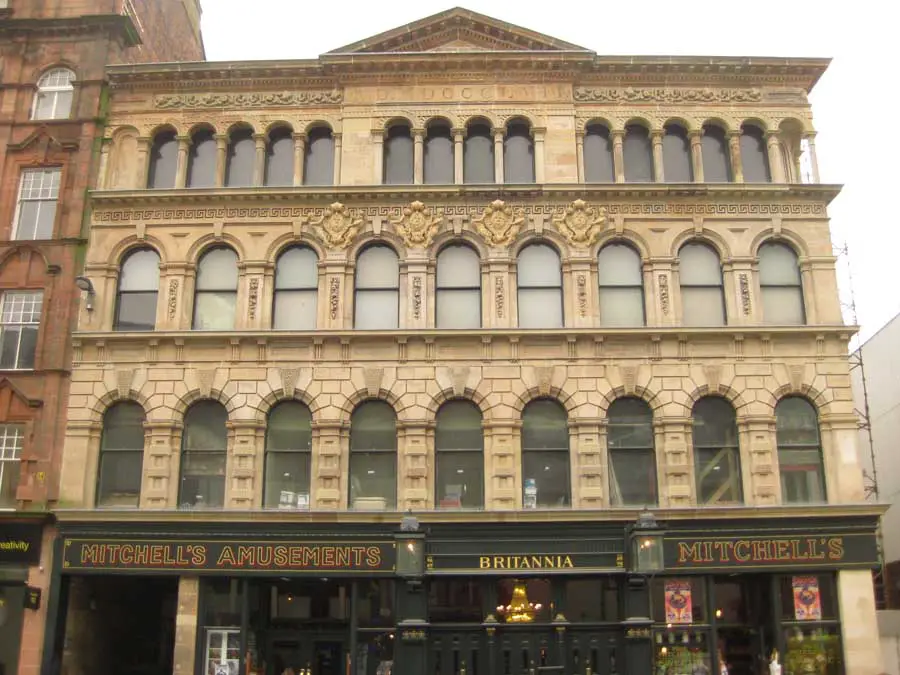Judith Bowers, an archaeologist and local historian, conducted walking tours in the Trongate area of Glasgow. She had heard about the Panopticon but had never managed to get access to the music hall which most of Glasgow had forgotten. After inquiring around the neighborhood Bowers was able to get access. She first got a glimpse of the auditorium above a modern shop floor in 1997 and was amazed to find that it had remained virtually untouched.
Founded in 1857, the Britannia was the most popular place of amusement in the city for many years. There was a time when 1500 people would cram themselves onto wooden benches for every show. As one enthusiastic volunteer, and excellent raconteur, explained to me, the audience could be quite rowdy and were know for throwing all kinds of things at the stage if they disapproved of the entertainment, including shipyard rivets, nails, rancid turnips, tomatoes and horse manure, it was not unheard of for someone to urinate directly onto the stage from the balcony. It is the stage where Laurel Hardy made his debut and it is rumored that a young Cary Grant also performed there. Between 1906 and 1938 the building had not just music hall and cinema entertainment, but also freak shows, waxworks, carnivals and a zoo.
The building was sold in 1938 to a firm that removed the entrance to the music hall and turned the ground floor of the building into a shop and converted the music hall on the first floor level into a workshop, hiding the balcony and upper auditorium behind a suspended ceiling. The balcony was sealed of and left unused, except for a few years during WWII when it was used as a chicken farm.

Since Judith first discovered abandoned stage, much has changed; the false ceiling which once hid the balcony has been removed, there is now a charitable trust which has been established to help preserve the Britannia Panopticon, and a Friends organization which costs £20 a year to join. Most importantly there are over 40 dedicated volunteers that work together to rescue the auditorium so that it can be fully preserved and safe for future generations to enjoy as a “living museum of music hall and Victorian/ Edwardian popular entertainments.” They have regular viewings, exhibitions, bazaars and traditional music halls shows all as part of their fundraising activities. The volunteers are working to ensure that the old music hall can remain open.
What stuck me most during my visit was the enthusiasm the volunteers had for the building and it’s colorful history. Everyone I met seemed to be deeply connected to the history and generous about sharing knowledge. They all seemed to have a story to tell, either about the early days when it operated as a music hall, or about their work together to revitalize the space. A community of oral historians has formed around the building. Judith works on administration part time and has regular help from several people who volunteer to help with office duties. The building is now protected as a category A listed building: "buildings of national or international importance, either architectural or historic, or fine little-altered examples of some particular period, style or building type.”
Unfortunately, I did not get an opportunity to ask specific questions about ideas of stewardship. This information was gathered through speaking with Judith Bowers and several volunteers at the Panopticon and from these websites: